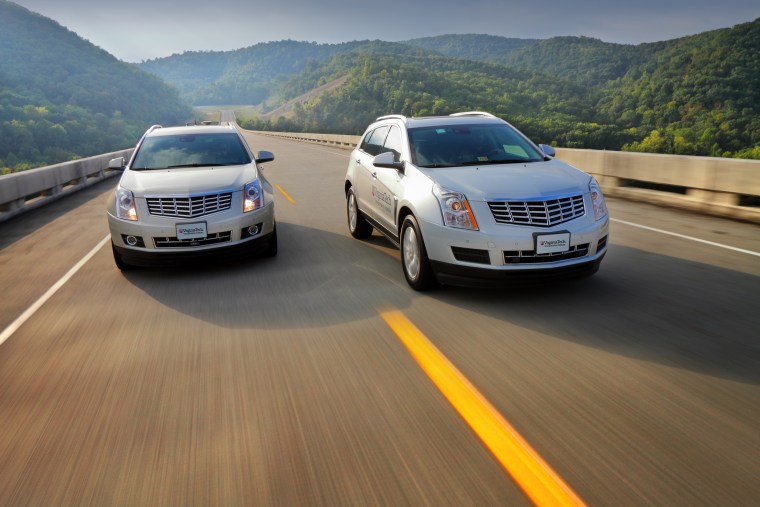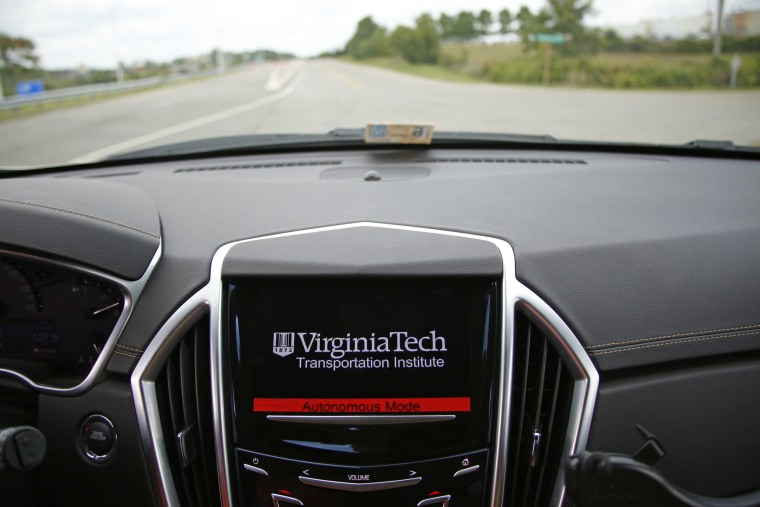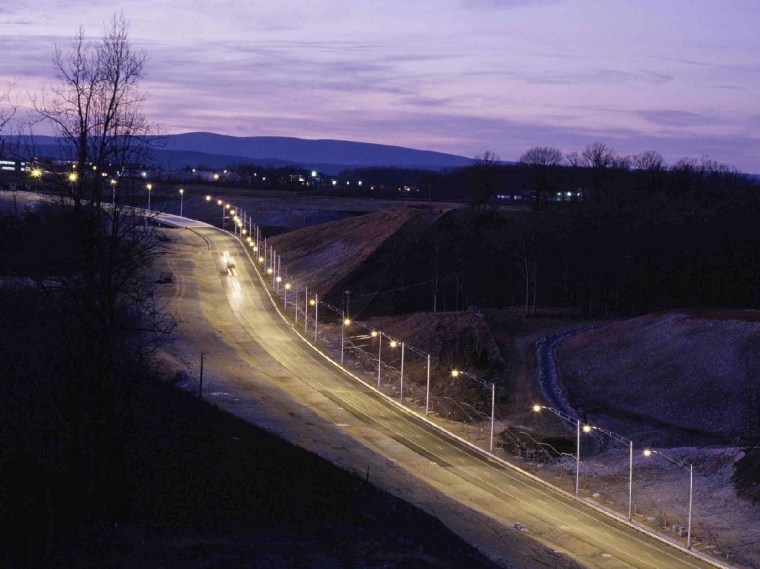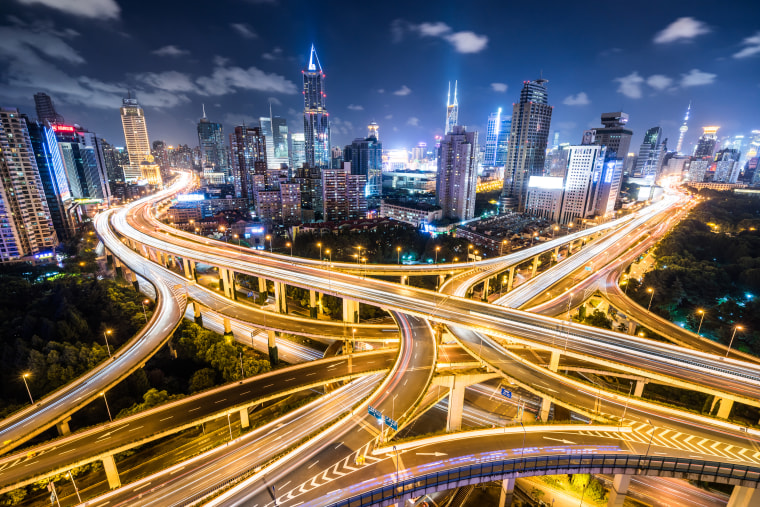With your windows down and music blaring, you hit 65 mph as you cruise down the highway. Nearing your exit, you flick your turn signal and make towards the exit on your right.
The path seems clear, but as you prepare to make that final lane switch, an alarm sounds through your stereo and a transparent message flashes on a small portion of your windshield. Though you're unable to see any danger, the message warns against changing lanes just yet because another car is entering the highway into that lane.
Related: Self-Driving Cars Will Turn Intersections Into High-Speed Ballet
Such scenarios may have once seemed like science fiction, but they could soon become commonplace. Despite their limited applications today, in the near future, autonomous cars will be able to communicate their movements with each other over short distances, interact with traffic lights and other transportation infrastructure, fully take over driving responsibilities, and navigate stormy weather, busy intersections, and unpredictable drivers with ease.
What's more, street lights will be able to dynamically respond to the environment and vehicles. Pavement markings will be able to absorb solar energy during the day and light up at night. Even the geometric design of the roads themselves will be improved to do away with dangerous left-hand turns across traffic.

"It's really an exciting time for transportation," says Carlos Sun, a transportation engineer at the University of Missouri. "The technology is changing rapidly."
Sun and other scientists around the world are engaged in numerous research projects that could spell big things for the future of transportation. The innovations will ultimately reshape the experience of hitting the road, making driving easier, less stressful, and, most importantly, safer.
Communication is Key
In this always-on, always-connected world, it's not a surprise that distracted driving is a dangerous problem — it played a role in 10 percent of all fatal motor vehicle accidents in the U.S. in 2013, according to the most recent figures from the Department of Transportation.
"Drivers today are becoming more distracted because they continue to talk on the phone, text, or play Pokemon Go," says Huei Peng, director of the University of Michigan Mobility Transformation Center. "Many drivers aren't dedicated to the driving task, so what can we do?"
One solution is to always keep our cars connected with each other.
"It's really an exciting time for transportation. The technology is changing rapidly."
Vehicles outfitted with dedicated short-range communications (DSRC) technology communicate by transmitting their location, direction, and speed directly to one another over a 5.9 GHz radio frequency band allocated by the Federal Communications Commission. The systems constantly perform risk assessments and alert you of various dangers, such as sudden lane changes or people speeding through intersections.
With DSRC, alerts display on car monitors, but further down the line they could also flash up on OLED displays embedded into windshields, Peng says. It wouldn't only be limited to new cars, either: Older vehicles could be retrofitted with these devices, which may also become available for pedestrians and cyclists. And cars equipped with systems such as automatic emergency breaking could use the information to avoid collisions on their own.
Related: This Autonomous Race Car is Driving into the Future
Today, GM's 2017 Cadillac CTS has DSRC built in, but the cars can currently only communicate with identical CTS vehicles. Other manufacturers, including Volvo and Mercedes, are also rolling out vehicle-to-vehicle communication systems that work exclusively between their cars. But these new systems transmit information through cloud-based servers via cellular networks instead of DSRC, which operates on an unclogged frequency and is potentially more reliable.
"The technology is already stable, but we have a kind of 'chicken-and-egg' problem," says Raj Rajkumar, a connected and autonomous vehicle researcher with Carnegie Mellon University. Since the technology isn't widespread just yet, buying a car with one of these communicative systems does you little good. As more auto manufacturers jump on board with DSRC, however, navigating our roads and highways will theoretically become a lot safer.

Further down the line, these systems will allow to vehicles communicate with street lights and other infrastructure, which could benefit drivers in various ways. "There's always a dilemma when you come up to a yellow light," Sun says. "Should I go through or stop?" With DSRC, the traffic signal can tell your car when exactly it will change color, providing you with more information to make the safest decision. It could also change lights to red or green automatically to respond to ambulances, giving the emergency vehicles the fastest possible route.
These technologies may eliminate or reduce the severity of up to 80 percent of crashes involving non-impaired drivers, according to the U.S. Department of Transportation, which is seeking to require all new cars to have vehicle-to-vehicle communication, starting around 2020.
Other approaches seek to help you better communicate directly with other drivers to create a calmer, more stress-free roadways.
Researchers in the Netherlands, for example, have developed an augmented reality app designed to help reduce road rage. The app allows you to flash selected messages , chosen from a menu, onto a transparent screen of another driver’s windshield, letting the driver know if you're rushing to the airport or hospital, among other things. The app discourages abuse by limiting how often you can send messages.
Letting Go of the Wheel
Today, autonomous vehicles have limited uses on highways and urban areas. But fully automated cars, which will be able to safely navigate streets by incorporating information from GPS, radar, video cameras, lasers, and ultrasonic sensors, will likely hit the streets in 10 years or so, Rajkumar says. But, he adds, two major challenges must be overcome.
First, the computer systems need to better handle unexpected situations. When we drive, we take in huge amounts of information and then apply common sense and logic to make driving decisions. "It's difficult to encode everything we do into lines of computer code," Rajkumar says.
Related: Will Self-Driving Cars Create an Organ Donor Shortage?
Second, the cars' various sensors need to better handle obstructions, such as heavy rain or snow, objects blocking signs, or the glaring sun obscuring traffic signals. Widespread incorporation of DSRC technology into vehicles, signs (including speed limit and emergency signs), and traffic lights will help solve this issue.
With fully autonomous cars, "driving" will allow you to catch up on work emails or Facebook messages during your commute. As the technology improves and the vehicles become better able to track other cars on the road, you may wind up seeing slimmer lanes, smaller gaps between cars in some lanes, and more cars on any given stretch of highway. "But if there is traffic or congestion, it won't matter because you're being productive," Rajkumar says.
The downtown urban landscape may also dramatically change, thanks to these vehicles that can autonomously find parking in less populated areas after dropping off their passengers. No longer needed, the numerous parking garages scattered through a city could be reclaimed as green spaces filled with trees and benches. And while driving through the city, you'd see fewer cars parked on the street or people circling to find parking spots, causing traffic.
Safety First
Connected and autonomous cars will make driving safer and less stressful, but so will the roads themselves.
Left-hand turns across opposing traffic may become a thing of the past. Most states now have at least one diverging diamond interchange, a type of road junction that temporarily switches the side of the road you drive on, allowing you to make safer left-hand turns on and off a highway without crossing oncoming traffic.
Sun and his colleagues found that these interchanges reduce fatal crashes by more than 60 percent. More than 80 of these interchanges have been built across the country with many more planned. "They're taking the United States by storm," Sun says, adding that they complement other designs, such as roundabouts and J-turns or superstreets.
Additionally, future pavement markings will be standardized across states. They’ll also last longer due to the incorporation of more durable materials and may provide improved light reflectance to help you or your car see them at night.
"We're also adding technologies and considering approaches that allow them to work in all weather conditions," says Ron Gibbons, director of the Center for Infrastructure-Based Safety Systems at the Virginia Tech Transportation Institute. These approaches could take the form of embedded LED studs that light up during heavy fog or radio technology that lets snow-covered markings communicate with your connected car.
Many states are now experimenting with high friction surface treatments — small pieces of gravel bound to the road with epoxy — to increase friction on road curves and wet roads, helping you keep control of your car in those situations. They're also using an anti-icing coating technology called SafeLane, which stores de-icing chemicals and releases them when needed.
A Smarter Future
Numerous technologies in the works seek to make roads not just safer, but smarter.
A big area of research, Gibbons says, is adaptive lighting, which would allow street lamps to react to the needs of drivers and roadways. These lights may dim or brighten depending on the number of cars on the road. With LED technology, they could also be directed to highlight specific road issues, helping you spot things like potholes at night.
In the Netherlands, researchers developed a glow-in-the-dark paint that absorbs solar energy during the day and illuminates at night, providing a functional ambience for nighttime journeys.

In the future, energy-related technologies could be integrated into roads and highways, adding increased functionality. These technologies include piezoelectric panels that convert vehicle-borne road vibrations to energy and so-called inductive power transfer systems that charge electric vehicles as they drive on the road. As costs reduce, solar highways, which incorporate durable solar panels into the road to generate electricity, may also start popping up — France opened the first solar highway (just 0.6 miles long) this past December.
The Sandpoint, Idaho start-up Solar Roadways is working on similar technology that will generate electricity and power heating elements to minimize snow and ice accumulation and LED lights that display lane markings. Missouri is currently installing the start-up's solar panels into a stretch of sidewalks at the Route 66 Welcome Center and Museum.
Related: Watch This Futuristic Hoverbike Ace Its First Flight
When fully integrated into our cars, traffic lights, street lamps, and roads, smart technology will revolutionize the driving experience. But while these advances are often developed with a "safety first" mindset, they'll only go so far in achieving that goal.
"Technology is often viewed as a savior, when it potentially is not," Sun says, adding the example of Bluetooth, which was intended to free people from holding their phones, but still doesn't prevent distracted driving. More than 90 percent of crashes involve human error, he says, so we need smarter drivers in addition to smarter transportation technology.
"It doesn't matter how much technology we put into it; if human drivers are involved, they can potentially foul things up. We need to, perhaps, improve human behavior as well."
